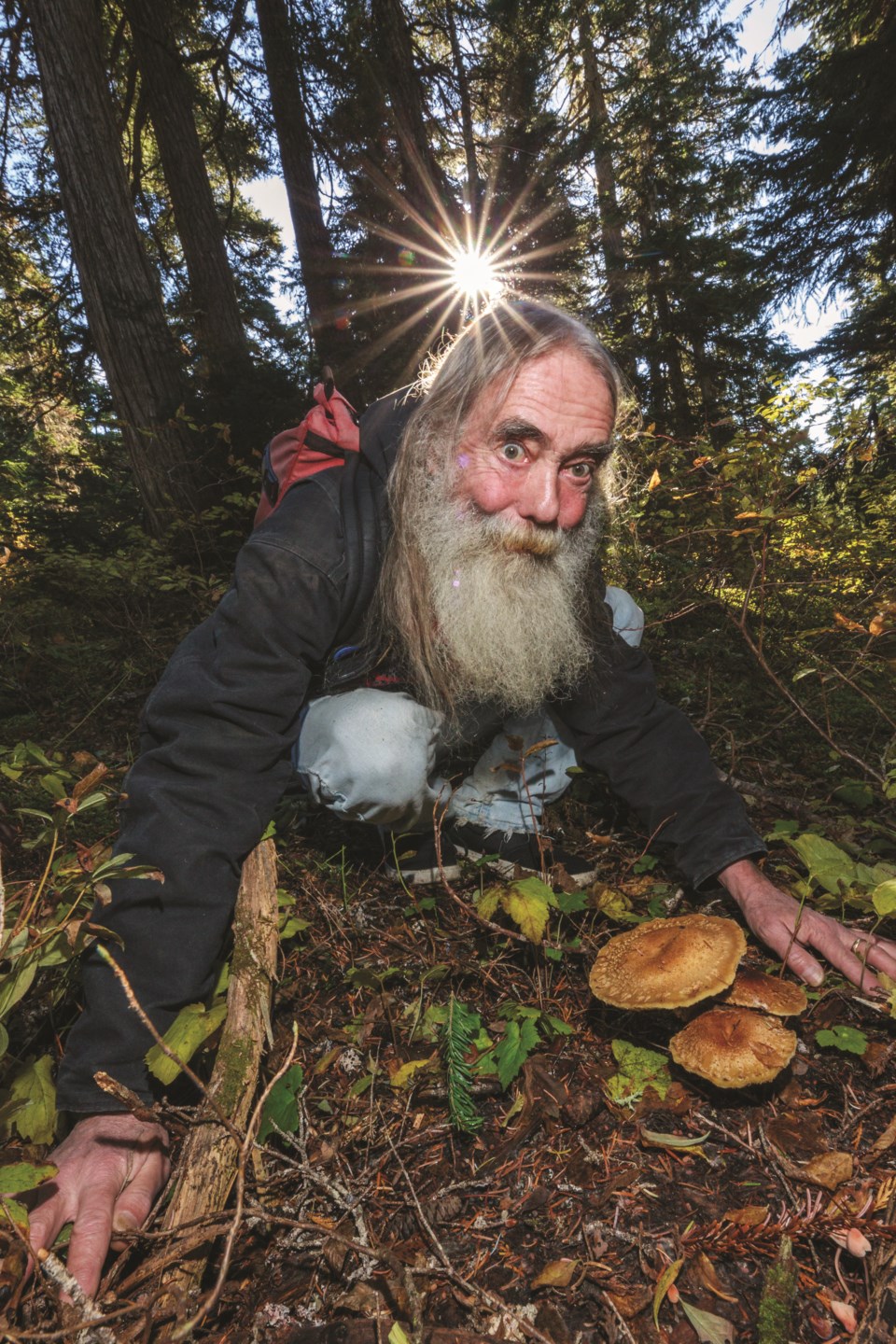With all the wet weather, it feels a bit like fall, and it even looks like fall with mushrooms popping up all over the place. So what’s going on?
A casual observer may think that mushrooms seem to pop up from nowhere. To understand what’s happening, let’s first look at what a mushroom is. Mushrooms are to a fungus what apples are to an apple tree—they are the fruiting body, and their purpose is to release tiny seeds (spores) to reproduce. Continuing with the analogy, an apple is quite small compared to the tree, which is the same with mushrooms and fungus.
A fungus that makes mushrooms is made up of mycelium (the fungal equivalent of roots) that branch and spread widely in substratem, such as soil or a dead tree. Making a mushroom takes two steps. First, over a few months, the fungus grows tiny buttons on the mycelium layer, which stay hidden in the ground or under the bark of a dead tree.
The second step is triggered by rain. These buttons are tightly bound structures, like a compressed, dry sponge that expands quickly when exposed to enough water. With our wet weather lately, the mycelia in our soils have been drawing in huge amounts of water, which expands the buttons and results in full-grown mushrooms popping up everywhere.
This is great news since mushrooms, or more exactly the fungi that produce them, are a vital part of our environment in Whistler and the world.
About half of our fungi are decomposers. To feed themselves, these fungi have evolved enzymes for digesting dead plant and animal materials. Just by eating, fungi are replenishing the soil by breaking down complex organic matter into simpler, reusable compounds. Without fungi working as decomposers, the ecosystem would not be able to recycle matter and wastes would build up. The ecosystem would collapse.
The other half of our fungi are in mutually beneficial relationships with plants. These fungi attach to or can grow into small feeder roots of plants and help absorb water and nutrients more efficiently. Then, in exchange, the plants provide carbon-based food for the fungi, which they produce through photosynthesis.
These fungi are called mycorrhiza, which means “fungus root,” and we wouldn’t have our forests without them. Humans have a similar symbiotic relationship with the billions of bacteria that live in our guts.
Recent studies investigating these mycorrhizal fungi found that they transport food from trees between themselves, fungus to fungus, but they can also connect trees together. Scientists like Susan Simard from UBC have found that big, old trees are hubs for this massive network that pretty much connects all the trees in the forest—a Wood Wide Web.
The underground network can shuttle food from a big tree to surrounding trees, and the ones that benefit the most are the youngest, most vulnerable trees. They’re really being nurtured and grown up as a community—a family almost.
So next time you’re in the forest keep an eye out for these incredible organisms. It’s amazing what you find when you start looking!
Explore more: Watch “What are fungi all about?” and “The fire of life” talks, part of our annual BioBlitz event: WhistlerNaturalists.ca/lecture-series.
Naturespeak is prepared by the Whistler Naturalists. To learn more about Whistler’s natural world, go to Whistlernaturalists.ca.




